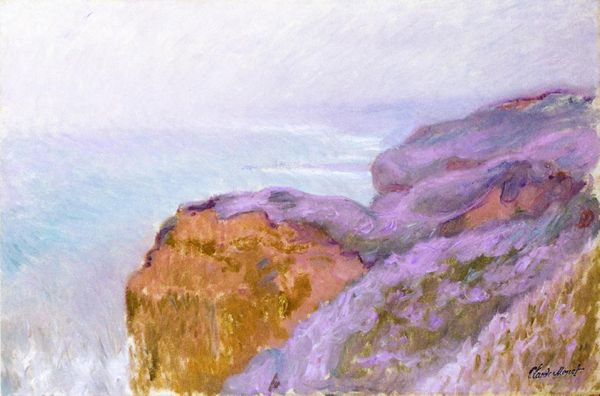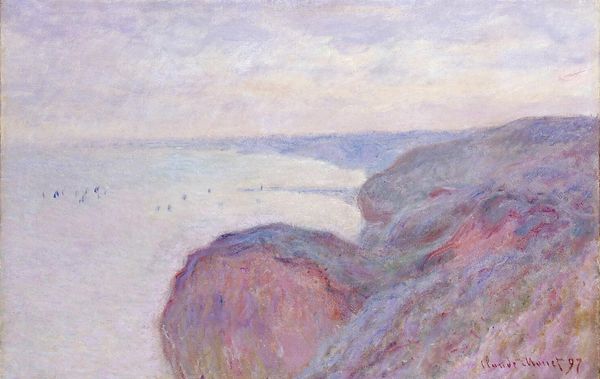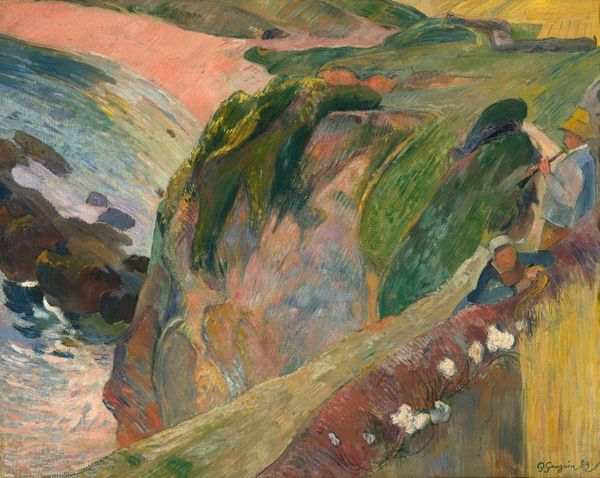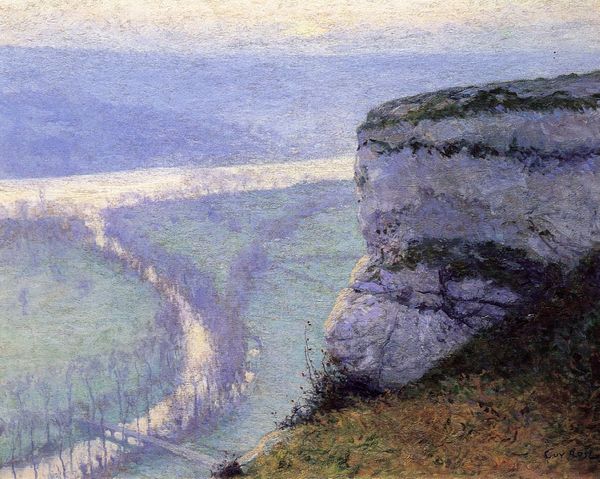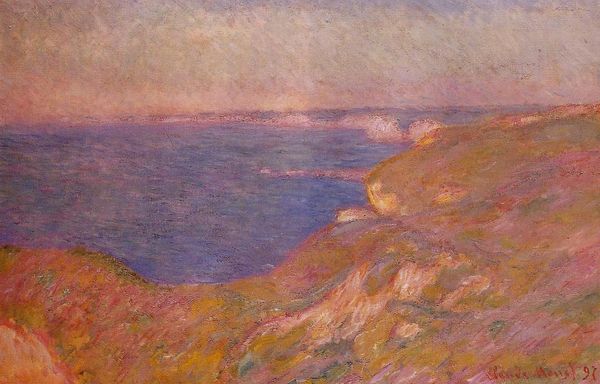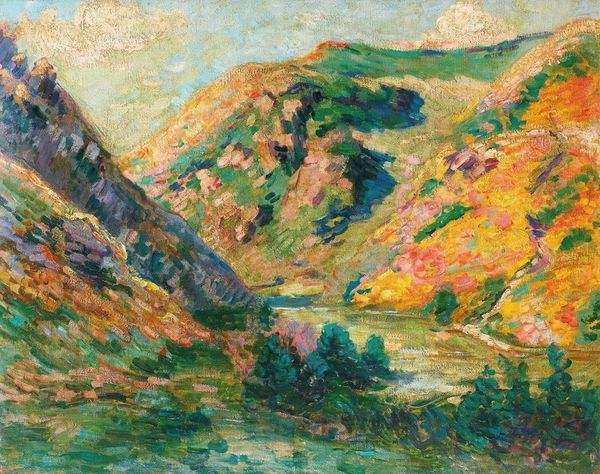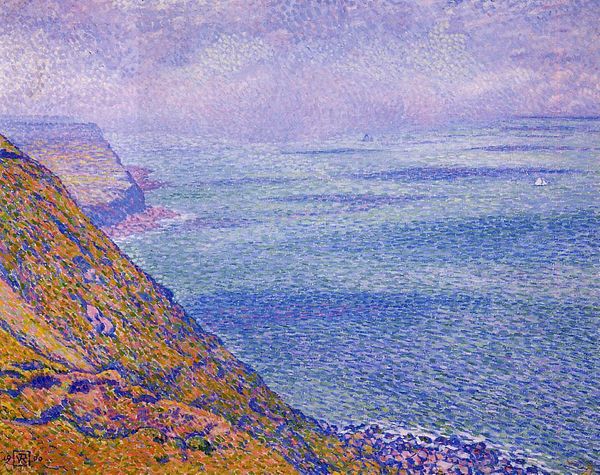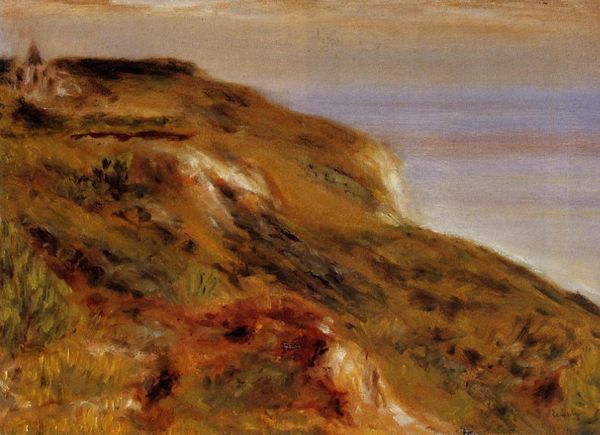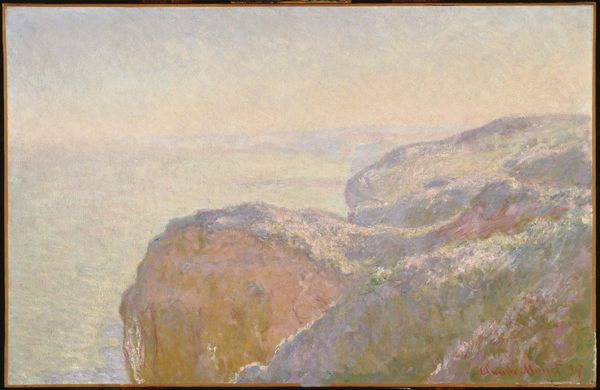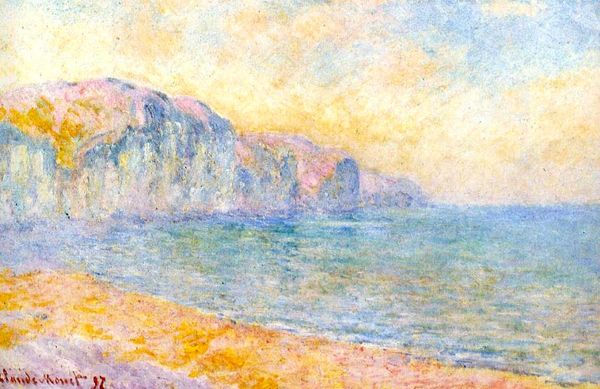
#
abstract expressionism
#
cliff
#
abstract painting
#
impressionist landscape
#
possibly oil pastel
#
oil painting
#
rock
#
fluid art
#
acrylic on canvas
#
paint stroke
#
watercolor
#
expressionist
Copyright: Public domain
Curator: Immediately, I am struck by the sheer tactile quality. Look at the impasto – those visible, almost sculptural brushstrokes! It practically begs to be touched. Editor: That’s interesting. Knowing that this piece, entitled “The Pointe du Petit Ailly”, was painted by Claude Monet in 1897 offers a valuable perspective, doesn’t it? Monet often returned to specific locations to observe the changing light, developing series around these motifs. How might this contextual understanding influence your interpretation? Curator: Well, understanding that this wasn’t a fleeting snapshot, but a sustained engagement with place, deepens my initial feeling. The rugged cliff face becomes symbolic. It feels like a monument to endurance, with the textured brushwork reflecting the resilience of nature itself. Monet isn't just painting a landscape, he’s building an idea of permanence. Editor: I see your point. We should also consider the rise of tourism and leisure in late 19th-century France. Coastal scenes like this became incredibly popular with the growing middle class, offering idealized visions of nature and escape. Was Monet responding to or perhaps even shaping this taste? Curator: Perhaps. But even within that commercial context, his subjective representation elevates the subject beyond mere scenic view. The blurring of detail, the focus on colour and light reflecting from the cliffs--this leans toward personal experience. The painting speaks to the isolating feeling of contemplating nature’s grander scale. There are also undertones of mortality with this sheer vertical drop off the coast. Editor: That sense of scale is important. The vantage point also reflects social and aesthetic hierarchies of the time. The cliffs stand steadfast against the relentless sea. There are questions concerning who gets to experience and interpret these sights, and what power dynamics are reflected by who decides what it all means. Curator: In this case, Monet clearly invites us to consider our individual position regarding a complex scene with these elements. Editor: Very well, an enriching viewpoint. "The Pointe du Petit Ailly" reminds us that landscape art in particular acts as a visual document that requires both personal and broad investigation of history and experience. Curator: Yes, that examination deepens our emotional and cultural awareness.
Comments
No comments
Be the first to comment and join the conversation on the ultimate creative platform.

